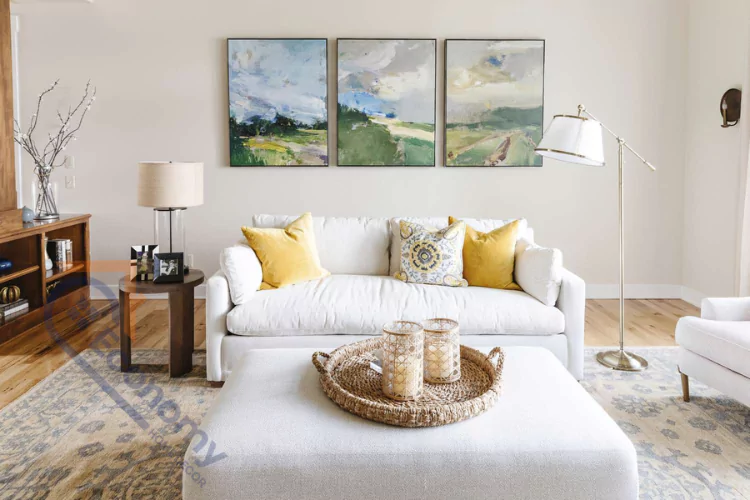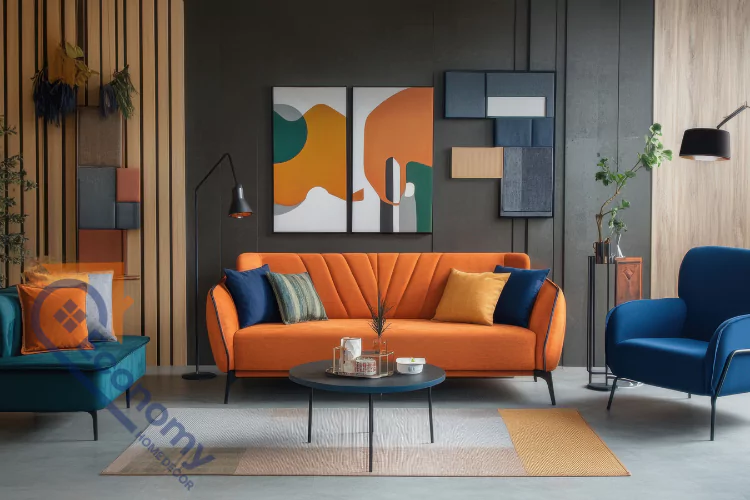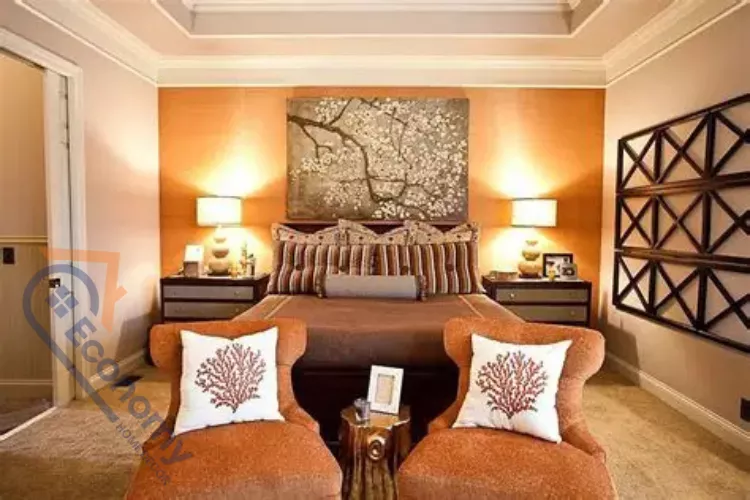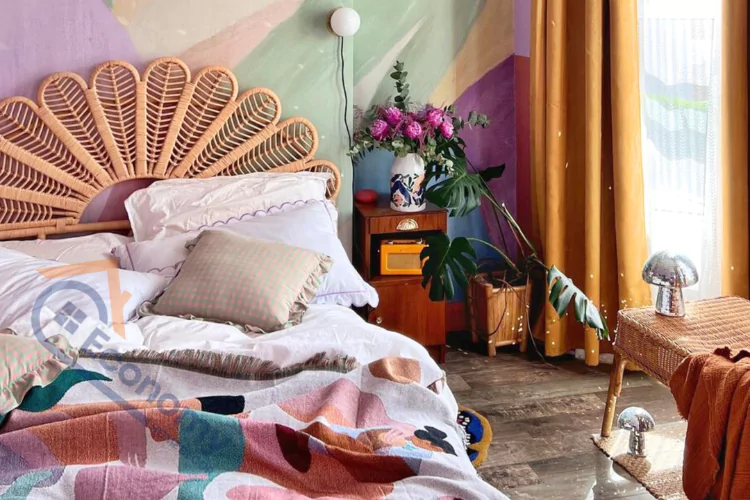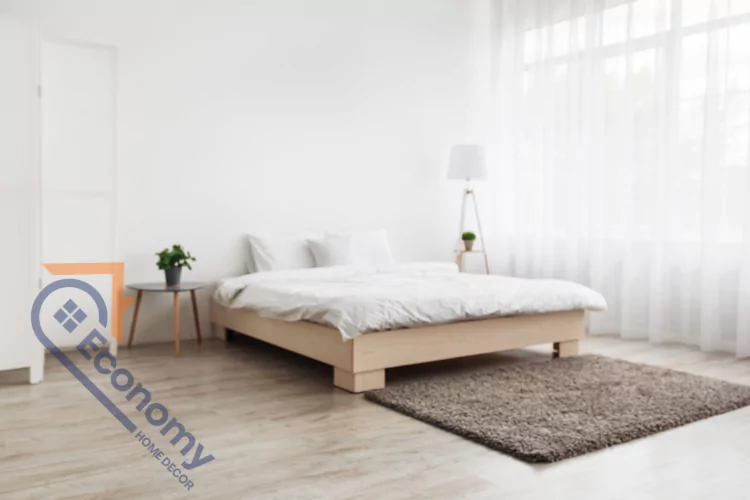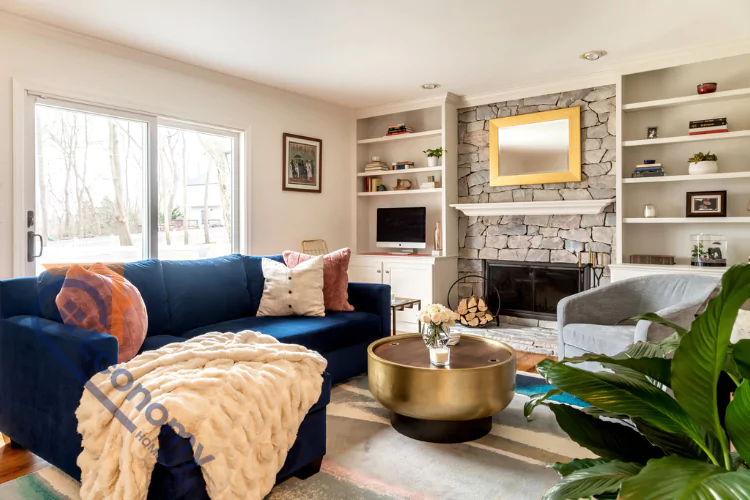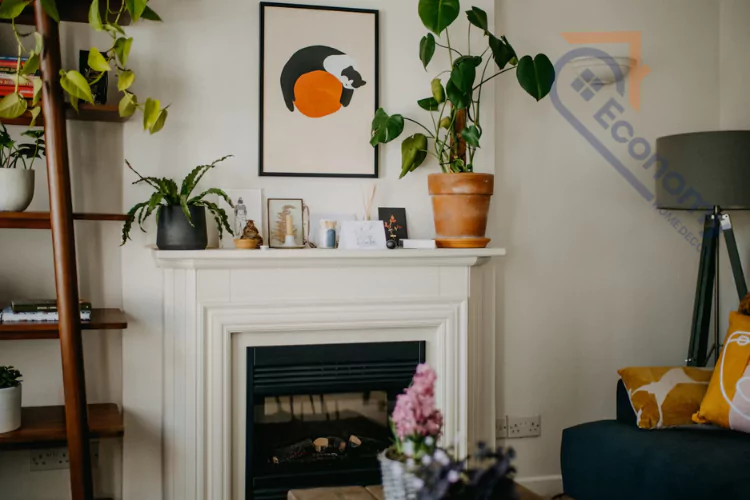Living in a small space doesn’t mean sacrificing style or comfort. With the right approach to small living room decorating ideas, you can transform even the tiniest space into a cozy, functional, and visually appealing haven. Whether you’re dealing with a studio apartment, a compact home, or simply want to make better use of your existing space, these creative solutions will help you maximize every square foot while maintaining a beautiful aesthetic.
The key to successful small space design lies in understanding how to balance functionality with style. By implementing smart storage solutions, choosing the right furniture, and using visual tricks to create the illusion of more space, you can create a living room that feels both spacious and inviting. This comprehensive guide will walk you through 15 proven strategies that interior designers use to make small living rooms feel larger, more organized, and incredibly stylish.
Key Takeaways
- Vertical space utilization is crucial for maximizing small living rooms
- Multi-functional furniture serves dual purposes while saving space
- Light colors and mirrors create the illusion of larger spaces
- Strategic lighting can dramatically transform a small room’s ambiance
- Decluttering and organization are essential for maintaining a spacious feel
- Budget-friendly solutions can be just as effective as expensive renovations
Understanding Small Living Room Challenges
Before diving into specific decorating small living room ideas, it’s important to understand the unique challenges that small spaces present. Limited square footage means every design decision carries more weight, and poor choices can quickly make a room feel cramped and uncomfortable. Common issues include inadequate storage, poor lighting, furniture that’s too large for the space, and the tendency for clutter to accumulate quickly.
Small living rooms often suffer from a lack of natural light, which can make them feel even smaller and more enclosed. Additionally, many people struggle with finding the right balance between having enough seating and maintaining open floor space for movement. The challenge lies in creating a room that serves multiple functions – from entertaining guests to relaxing after work – while keeping everything organized and visually appealing.
Understanding these challenges is the first step toward overcoming them. By recognizing the specific limitations of your space, you can make informed decisions about which ideas for small living room decor will work best for your particular situation. Remember, what works in one small space may not work in another, so it’s important to consider your room’s unique characteristics, including its layout, natural light, and your personal lifestyle needs.
Smart Furniture Selection for Small Spaces
Choosing the right furniture is perhaps the most critical aspect of very small living room decorating ideas. The furniture you select should be appropriately sized for your space, serve multiple functions when possible, and contribute to the overall aesthetic without overwhelming the room. Start by measuring your space carefully and creating a floor plan before making any purchases.
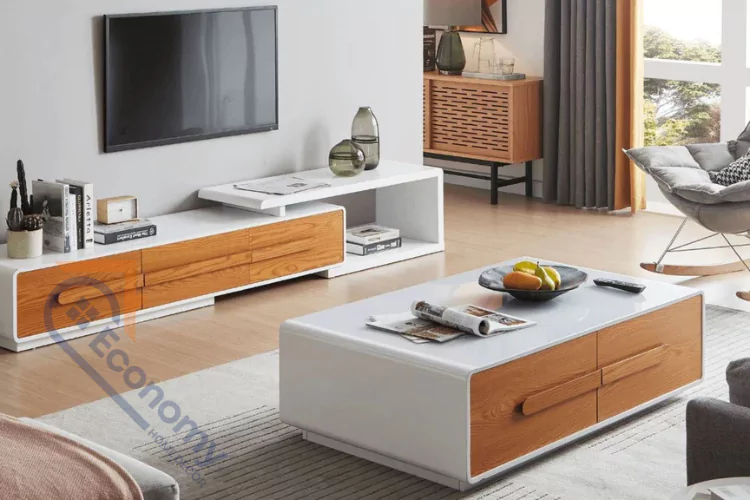
Multi-functional pieces are your best friend in a small living room. Consider ottomans with hidden storage, coffee tables that double as dining surfaces, or sofas with built-in storage compartments. These pieces help you maximize functionality without adding extra items to your space. A storage bench can provide seating while hiding away blankets, books, or other items that might otherwise create clutter.
Scale and proportion are crucial when selecting furniture for small spaces. Avoid oversized pieces that will dominate the room, but don’t go too small either, as this can make the space feel choppy and disconnected. Instead, choose furniture that fits comfortably in your space while leaving adequate room for movement. Consider furniture with legs, as this creates a sense of openness by allowing you to see the floor beneath, making the room feel more spacious.
Flexible seating options can help you accommodate guests without permanently taking up space. Folding chairs, stackable stools, or floor cushions can be stored away when not needed and brought out when you’re entertaining. This approach allows you to maintain a more open feeling in your everyday living space while still having the ability to accommodate larger groups when necessary.
Maximizing Vertical Space
One of the most effective small living room decor ideas involves thinking vertically rather than horizontally. When floor space is limited, the walls and ceiling become valuable real estate for both storage and decoration. Installing floating shelves, wall-mounted cabinets, and tall bookcases can provide significant storage without taking up precious floor space.
Floor-to-ceiling storage solutions make a dramatic impact in small living rooms. Built-in shelving units or tall bookcases draw the eye upward, creating the illusion of higher ceilings and more space. Use these vertical storage solutions to display books, plants, decorative objects, and even hide less attractive items in stylish baskets or boxes.
Wall-mounted furniture is another excellent way to maximize vertical space. Consider mounting your TV on the wall instead of using a media console, or install floating shelves instead of traditional side tables. Wall-mounted desks can provide a workspace without taking up floor space, and wall-mounted lighting frees up surface space on tables and desks.
Tall, narrow furniture pieces work better in small spaces than wide, low pieces. A tall, narrow bookcase takes up less floor space than a wide, short one while providing similar storage capacity. Similarly, a tall plant stand with multiple levels can display several plants in the same footprint as a single pot on the floor.
Color Schemes That Create Spaciousness
The right color palette is essential for successful small living room furniture decorating ideas. Light colors reflect light and make spaces feel larger, while dark colors absorb light and can make rooms feel smaller and more enclosed. However, this doesn’t mean you’re limited to all-white everything – there are many ways to incorporate color while maintaining a spacious feel.
Neutral base colors provide the foundation for a spacious-feeling room. Whites, off-whites, light grays, and beiges create a clean, airy backdrop that makes rooms feel larger. These colors also provide flexibility, allowing you to add pops of color through accessories, artwork, and textiles that can be easily changed over time.
Monochromatic color schemes can create a sense of continuity and flow that makes spaces feel larger. Using different shades of the same color family creates visual interest without the jarring contrasts that can make small spaces feel choppy. For example, using various shades of blue from pale sky blue to deeper navy can create depth while maintaining cohesion.
Strategic use of accent colors can add personality without overwhelming the space. Choose one or two accent colors and use them sparingly throughout the room in pillows, artwork, or a single accent wall. This approach allows you to inject personality while maintaining the spacious feel that light colors provide.
Lighting Solutions for Small Living Rooms
Proper lighting is crucial for small living room decorating ideas modern approaches. Good lighting can make a small room feel larger, more welcoming, and more functional. The key is to use multiple light sources at different levels to create a layered lighting scheme that illuminates the entire space effectively.
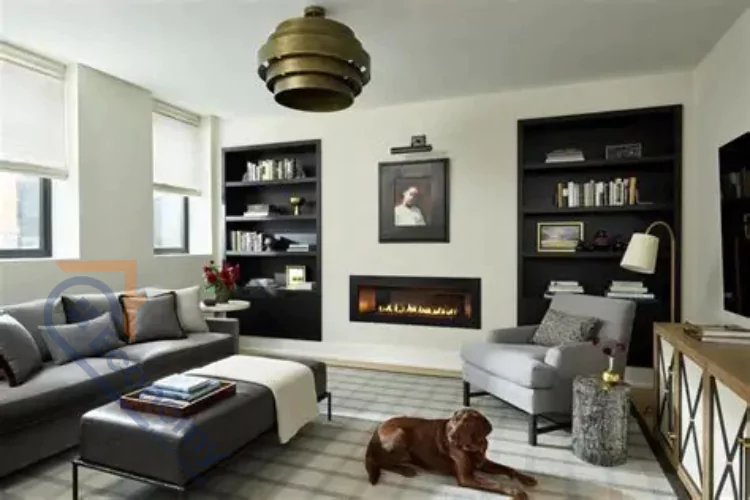
Natural light optimization should be your first priority. Keep windows unobstructed and use light-colored or sheer window treatments that allow maximum light penetration while maintaining privacy. Mirrors placed strategically near windows can reflect natural light deeper into the room, effectively doubling the amount of light available.
Layered artificial lighting includes ambient, task, and accent lighting. Ambient lighting provides general illumination, task lighting serves specific functions like reading, and accent lighting highlights architectural features or artwork. In small spaces, wall sconces and pendant lights work better than table lamps because they don’t take up surface space.
Light-colored lampshades and fixtures help distribute light more effectively than dark ones. Choose white or cream-colored shades that allow light to pass through, creating a softer, more diffused illumination. Avoid heavy, dark fixtures that can make the ceiling feel lower and the room more cramped.
Storage Solutions That Don’t Compromise Style
Small living room decorating ideas on a budget often focus heavily on storage because clutter is the enemy of spacious-feeling rooms. The key is finding storage solutions that are both functional and aesthetically pleasing, so they contribute to the room’s overall design rather than detracting from it.
Hidden storage is invaluable in small living rooms. Ottoman storage, under-sofa storage, and built-in cabinets with doors can hide away items that would otherwise create visual clutter. The goal is to have a place for everything while keeping these storage solutions as invisible as possible.
Decorative storage serves dual purposes by providing both function and visual interest. Beautiful baskets, stylish boxes, and attractive containers can store items while adding to the room’s aesthetic. Choose storage pieces that complement your color scheme and overall design style.
Multi-level storage takes advantage of vertical space while keeping items organized and accessible. Floating shelves at different heights, tiered side tables, and stackable storage cubes can provide significant storage capacity without taking up much floor space. This approach also adds visual interest by creating different levels and dimensions in the room.
Modern Minimalist Approaches
Modern small living room decor ideas often embrace minimalist principles that naturally work well in small spaces. The minimalist approach focuses on keeping only essential items while ensuring that everything in the room serves a purpose and contributes to the overall aesthetic.
Clean lines and simple forms are hallmarks of modern minimalist design. Choose furniture with straight lines and simple silhouettes rather than ornate or overly decorative pieces. This approach creates a sense of calm and order that makes small spaces feel more open and less cluttered.
Neutral color palettes with occasional pops of color work well in modern minimalist small living rooms. Stick to a limited color palette of two or three colors, using different textures and materials to add visual interest without creating chaos. This restrained approach helps maintain the clean, uncluttered look that makes small spaces feel larger.
Quality over quantity is a key principle in minimalist design. Instead of filling your space with many small items, choose fewer, higher-quality pieces that make a statement. A single beautiful piece of artwork can have more impact than several smaller pieces, and one well-chosen accent piece can add personality without overwhelming the space.
Budget-Friendly Decorating Ideas
You don’t need to spend a fortune to implement effective small living room decorating ideas on a budget. Many of the most effective small space solutions are surprisingly affordable, and with some creativity and DIY spirit, you can achieve professional-looking results without breaking the bank.
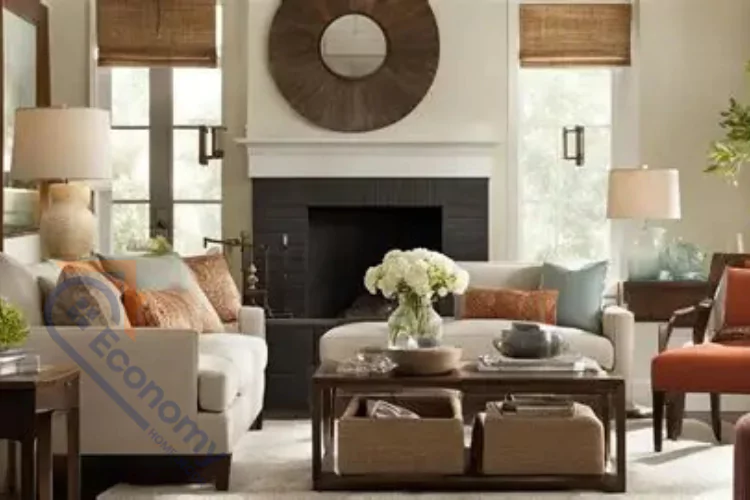
DIY projects can provide custom solutions that fit your specific space and needs. Building your own floating shelves, creating custom storage solutions, or repurposing existing furniture can save money while ensuring that everything fits perfectly in your space. Simple DIY projects like painting furniture or creating custom artwork can also add personal touches that make your space feel unique.
Shopping secondhand can yield amazing finds for small living room furniture and decor. Thrift stores, estate sales, and online marketplaces often have unique pieces at fraction of retail prices. Look for quality pieces that can be updated with paint or new hardware to fit your style and color scheme.
Repurposing existing items is another budget-friendly approach. That old ladder can become a unique bookshelf, vintage suitcases can serve as storage and coffee tables, and decorative boxes can hide clutter while adding style. Think creatively about how everyday items can serve new purposes in your small living room.
Incorporating Bay Windows Effectively
Small living room with bay window decorating ideas require special consideration because bay windows can be both an asset and a challenge in small spaces. When decorated properly, bay windows can add character and functionality to your living room while making it feel larger and more interesting.
Window seating is one of the most effective ways to utilize bay window space. A built-in or custom bench with storage underneath can provide extra seating while creating a cozy reading nook. Add cushions and pillows to make the space comfortable and inviting. This approach turns what might be awkward, unusable space into a functional and attractive feature.
Display areas in bay windows can showcase plants, books, or decorative objects while taking advantage of the natural light. Floating shelves or a narrow console table can provide display space without blocking the windows. This approach draws attention to the architectural feature while providing functional storage and display space.
Light management is crucial when decorating bay windows in small living rooms. Choose window treatments that provide privacy when needed but can be completely opened to maximize natural light. Cafe curtains, Roman shades, or shutters that can be folded back work well for this purpose.
Fireplace Integration in Small Spaces
Small living room with fireplace decor ideas need to balance the prominence of the fireplace with the need to maximize space efficiency. A fireplace can be a wonderful focal point, but it can also dominate a small room if not handled carefully.
Built-in storage around fireplaces can provide valuable storage space while creating a cohesive look. Floor-to-ceiling shelving on either side of the fireplace can store books, display decorative objects, and even hide electronics. This approach makes the fireplace feel like part of a larger, integrated design rather than a standalone feature.
Furniture arrangement around fireplaces requires careful consideration in small spaces. Instead of pointing all furniture toward the fireplace, consider angled arrangements that create conversation areas while maintaining traffic flow. A small sectional or loveseat positioned at an angle can provide seating while leaving space for movement.
Mantel styling should be kept simple and uncluttered in small rooms. Choose a few larger pieces rather than many small items, and consider the scale of your decorative objects in relation to the room size. A large mirror above the mantel can reflect light and make the room feel larger.
Mirror Magic: Creating Illusion of Space
Mirrors are among the most powerful tools in decorating a small living room ideas because they can literally double the visual space in a room. Strategic placement of mirrors can reflect natural light, create the illusion of additional windows, and make rooms feel significantly larger than they actually are.
Large statement mirrors have more impact than small ones in creating the illusion of space. A single large mirror can act as a focal point while reflecting light and views throughout the room. Position large mirrors opposite windows to reflect natural light, or use them to reflect attractive views or architectural features.
Mirror groupings can create interesting visual displays while still providing the space-enhancing benefits of mirrors. A collection of different-sized mirrors arranged on a wall can create an artistic focal point while reflecting light from multiple angles. This approach adds visual interest while maintaining the practical benefits of mirrors.
Mirrored furniture can provide the space-enhancing benefits of mirrors while serving functional purposes. Mirrored coffee tables, side tables, or storage pieces can make rooms feel larger while providing necessary furniture functions. However, use mirrored furniture sparingly to avoid overwhelming the space.
Plant and Greenery Integration
Adding plants to small living rooms requires careful consideration, but the benefits – improved air quality, natural beauty, and a sense of life and freshness – make it worthwhile. The key is choosing the right plants and positioning them strategically to enhance rather than overwhelm your space.
Vertical gardening solutions work well in small spaces. Wall-mounted planters, hanging plants, or tall plant stands can add greenery without taking up floor space. This approach also draws the eye upward, creating the illusion of height and space.
Multi-level plant displays can create visual interest while maximizing the impact of your plants. Group plants of different heights and sizes together, using plant stands or floating shelves to create different levels. This approach creates a lush, garden-like feeling without overwhelming the space.
Low-maintenance plants are ideal for small living rooms because they require minimal care and equipment. Snake plants, pothos, and ZZ plants are excellent choices because they tolerate low light and infrequent watering while still providing the visual benefits of greenery.
Textile and Fabric Choices
The textiles you choose for your small living room can significantly impact how spacious and comfortable it feels. The right fabrics can add warmth and personality while maintaining the open, airy feeling that makes small spaces work.
Light-colored fabrics reflect light and make rooms feel larger, while dark colors absorb light and can make spaces feel smaller. Choose light-colored upholstery, curtains, and throw pillows to maintain a spacious feeling. However, this doesn’t mean everything must be white – light blues, soft grays, and warm creams can provide color while maintaining the benefits of light colors.
Texture variety adds visual interest without requiring additional colors or patterns. Mix smooth and rough textures, soft and firm materials, and different weaves to create depth and interest. A smooth leather chair, a nubby wool throw, and a sleek silk pillow can create a rich, layered look without adding visual complexity.
Pattern considerations require careful thought in small spaces. Large patterns can overwhelm small rooms, while very small patterns can create visual chaos. Medium-sized patterns or simple geometric designs often work best. If you want to use patterns, consider using them sparingly as accents rather than as the main fabric choice.
Technology Integration
Modern small living room decor ideas must account for technology needs while maintaining a clean, uncluttered appearance. Smart integration of technology can actually help save space while providing all the functionality you need.
Wall-mounted electronics save valuable surface space and can be positioned for optimal viewing. Mount your TV on the wall and use cord management systems to keep cables hidden. This approach eliminates the need for a large entertainment center while creating a cleaner, more modern look.
Wireless solutions reduce the need for cables and cords that can create visual clutter. Wireless speakers, charging stations, and streaming devices can provide all the functionality you need without the mess of cables. This approach is particularly important in small spaces where every element is visible.
Hidden technology keeps the focus on design rather than electronics. Built-in speakers, hidden cable management, and storage solutions that conceal electronics when not in use can maintain a clean, uncluttered appearance while providing all the technology functionality you need.
Small Living Room Decorating Strategies
| Strategy | Cost | Difficulty | Impact | Best For |
|---|---|---|---|---|
| Light Color Schemes | Low | Easy | High | All small spaces |
| Multi-functional Furniture | Medium | Easy | High | Studios, apartments |
| Vertical Storage | Low-Medium | Medium | High | Rooms with high ceilings |
| Strategic Lighting | Medium | Medium | High | Dark rooms |
| Mirrors | Low | Easy | High | Rooms with windows |
| Built-in Storage | High | Hard | High | Permanent solutions |
| Plant Integration | Low | Easy | Medium | Rooms with natural light |
| Textile Updates | Low | Easy | Medium | Quick refreshes |
Frequently Asked Questions
The biggest mistake is overcrowding the space with too much furniture or too many decorative items. Less is definitely more in small spaces – choose fewer, higher-quality pieces that serve multiple functions.
Use light colors, add mirrors, improve lighting, and declutter. These changes can dramatically impact how spacious your room feels without requiring major construction or significant expense.
While light colors generally make spaces feel larger, you can use dark colors as accents or on a single accent wall. Just balance dark colors with plenty of light colors and good lighting.
Choose furniture that’s appropriately scaled for your space – not too large that it overwhelms, but not so small that it looks lost. Measure your space carefully and create a floor plan before purchasing.
The number depends on your space and the size of the plants. Start with 2-3 plants and see how they look. You can always add more if you have space and adequate light.
Yes, but choose the right size. A rug that’s too small can make the room feel chopped up. Choose a rug large enough for at least the front legs of your furniture to sit on it.
Conclusion
Creating a beautiful, functional small living room is entirely achievable with the right approach and creativity. By implementing these small living room decorating ideas, you can transform even the smallest space into a comfortable, stylish haven that feels much larger than its actual square footage. Remember that successful small space design is about making smart choices, maximizing functionality, and creating visual tricks that enhance the sense of space.
The key to success lies in understanding your space’s unique characteristics and choosing solutions that work specifically for your situation. Whether you’re working with very small living room decorating ideas or simply want to make better use of a compact space, these strategies will help you create a room that’s both beautiful and functional.
Start with the basics – good lighting, appropriate furniture, and a cohesive color scheme – then add personal touches that reflect your style and personality. Remember that decorating a small living room is an ongoing process, and you can always make adjustments as you discover what works best for your space and lifestyle. With patience and creativity, your small living room can become your favorite space in your home.

